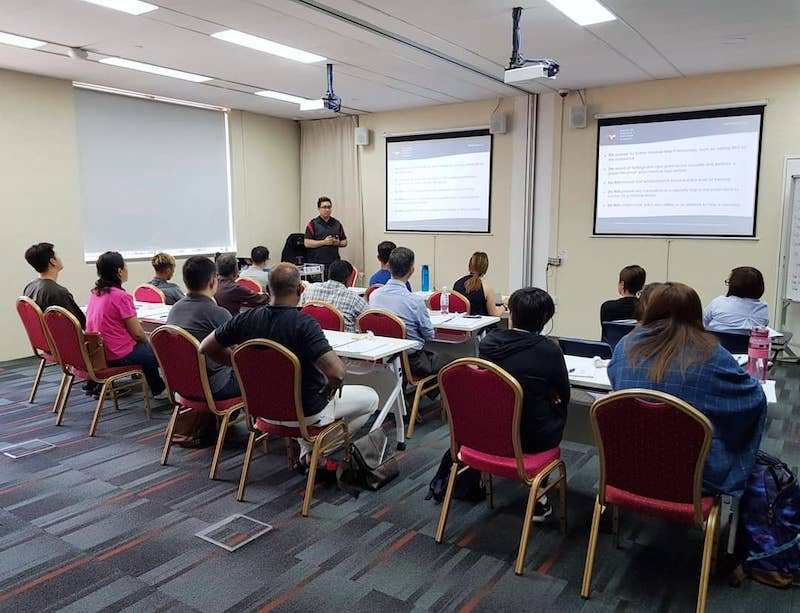Employee health and workplace safety is getting a push in Singapore as the government is setting its sights on becoming one of the top countries with the safest and healthiest workplaces by 2028.
The Ministry of Manpower (MOM), will be publishing companies’ major injury and fatality rates to encourage companies to take ownership of safety practices within their firms and to increase transparency to help service-buyers make more informed decisions.
According to MOM, falls from height accounted for the main cause of fatalities. Slips, trips and falls represented the leading cause of major injuries. The second and third causes of major injuries were machinery incidents and falls from height respectively.
The three causes collectively accounted for 349 (59%), of the 596 major injuries — defined as accidents that require amputation or lead to paralysis, crushing, fractures or dislocations, among others.
The following are 5 strategies that can be implemented to improve and sustain workplace safety culture.
Psychological Safety: Foster a Culture of Trust & Open Communication

The formula to maintaining a safe and effective workplace lies in open communication. Open communication is an indicator that a high level of trust and employee engagement exists at the workplace.
A study by Aon found that only 59% of employees in Singapore feel engaged at work, making them amongst the least engaged employees in Asia. In contrast, employee engagement is highest in Indonesia at 76%, followed by India and the Philippines (71% each), China (69%), Thailand (64%), and Malaysia (63%). Disengagement at work often lead to lower productivity and profit loss, but disengagement at a construction site could lead to employee injury or death. In fact, companies ranked in the top 25% in terms of employee engagement saw a 48% decrease in safety incidents compared to the bottom 25%.
Companies must engage and communicate with employees so that they are more willing to express their concerns over workplace safety issues. That is the most direct method of staying current with workplace safety issues. Oftentimes, employees don’t believe that their opinions matter or that their contributions may be restricted by workplace hierarchies.
A study on organisational behaviour found that when employees feel comfortable candidly voicing their opinions, suggestions, or concerns, organisations become better at handling threats as well as opportunities. People who may be naturally inclined to raise ideas and offer suggestions may not do so if they fear being put down or punished. “On the flip side, encouraging and rewarding speaking up can help more people do so, even if their personality makes them more risk-averse,” they noted.
Implementing Strict Safety Policies
Safety policies should be implemented to limit access to hazardous work areas. Employees who are not authorised to work in high-risk roles should not be allowed to enter hazardous areas without proper safety equipment. With strict safety zoning policies in place, workplace accidents can be prevented and reduced. Hazard zones can be clearly labelled and highlighted with warning tapes, paint and proper warning signs.
Carry out Health & Safety Trainings
Conduct health and safety training programs for employees so that they know how to respond if anyone is hurt at the workplace. A simple first aid course would prove very useful for employees who work in a kitchen for example. Kitchen staff are prone to knife cuts and scalding, and knowing how to treat these injuries accordingly can reduce the risk of infection or food contamination. Carry out fire and emergency drills occasionally to prepare employees so they know how to react and follow emergency action plans.
Corporate Safety Courses in Singapore

If you are interested in training your employees in workplace safety courses, Singapore Emergency Responder Academy (SERA) offers a course designed in accordance to Workplace Safety and Health (First Aid) Regulation. Participants can learn to apply First Aid to Adult casualty, perform Cardiopulmonary Resuscitation (CPR) and to use the Automated External Defibrillator (AED) safely in a workplace.
The course is in accordance with guidelines and methodology stipulated by the Singapore Resuscitation and First Aid Council and approved by the Ministry of Manpower.

For a special time only, SERA is offering a promotional rate for their Occupational First Aid Course , available in both English and Mandarin, at $250 (bGST) for Day Classes and $168 (bGS) for evening classes.
Employers can apply for further SkillsFutureSG funding for these courses!
Coordinating Safety Policies with Ground Managers
Front line managers play an important role in implementing safety policies on the ground and making sure that they work. They are custodians of workplace safety as they have the duty to enforce safety policies and to protect employees. It would be an added bonus if front line managers are willing to invest in safety equipments, such as anti-slip safety mats, safety glasses, ear protection equipment, masks etc. These simple yet effective products will make employees feel taken care of and cultivate a culture of safety in the workplace.
Employee Discipline & Welfare
Fear of discipline may stifle employee engagement and may be detrimental when cultivating a culture of safety and open reporting. When it comes to safety issues, most problems can be effectively managed without using discipline to instil fear. When applied irresponsibly, it can lead to a whole array of negative consequences such as lower morale, reduced trust, lower productivity, less teamwork and lack of engagement. Furthermore, it may cripple the organisation’s ability to learn from safety lapses and become more proactive.
Adopt employee welfare schemes to reward employees for working hard and give them peace of mind by providing medical benefits, paid sick leaves and etc. However, managing medical claims, leaves and payroll can be difficult if you do not have Human Resource Management System(HRMS) to work with. Payboy.biz, a local HRMS company, has a fully updated and compliant system to help you with that and at a very friendly price.
Conclusion: Safety requires care and consistency
Creating a safe space for employees takes work, but fortunately, it doesn’t require a lot of expensive training—just care and consistency.

Stay connected